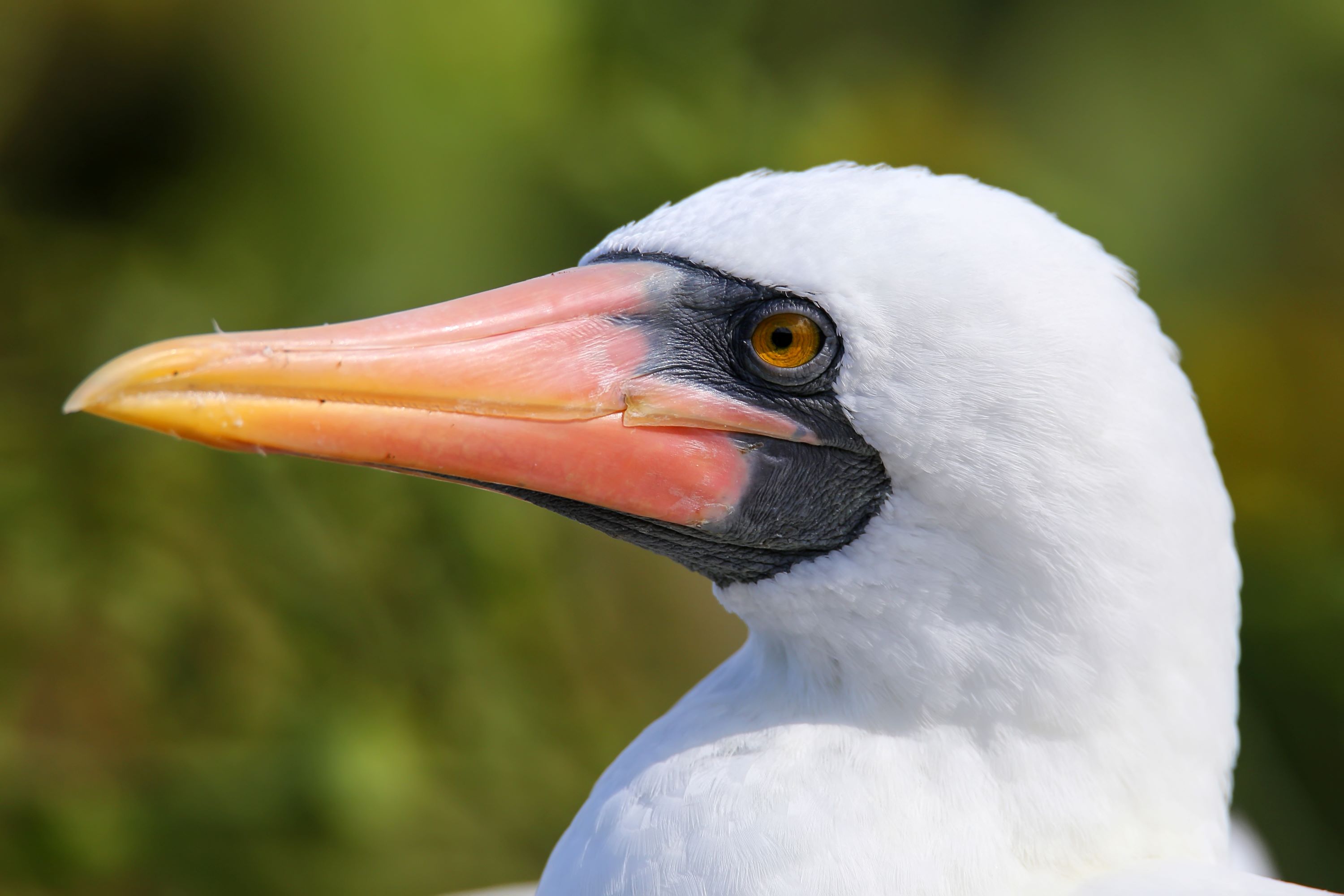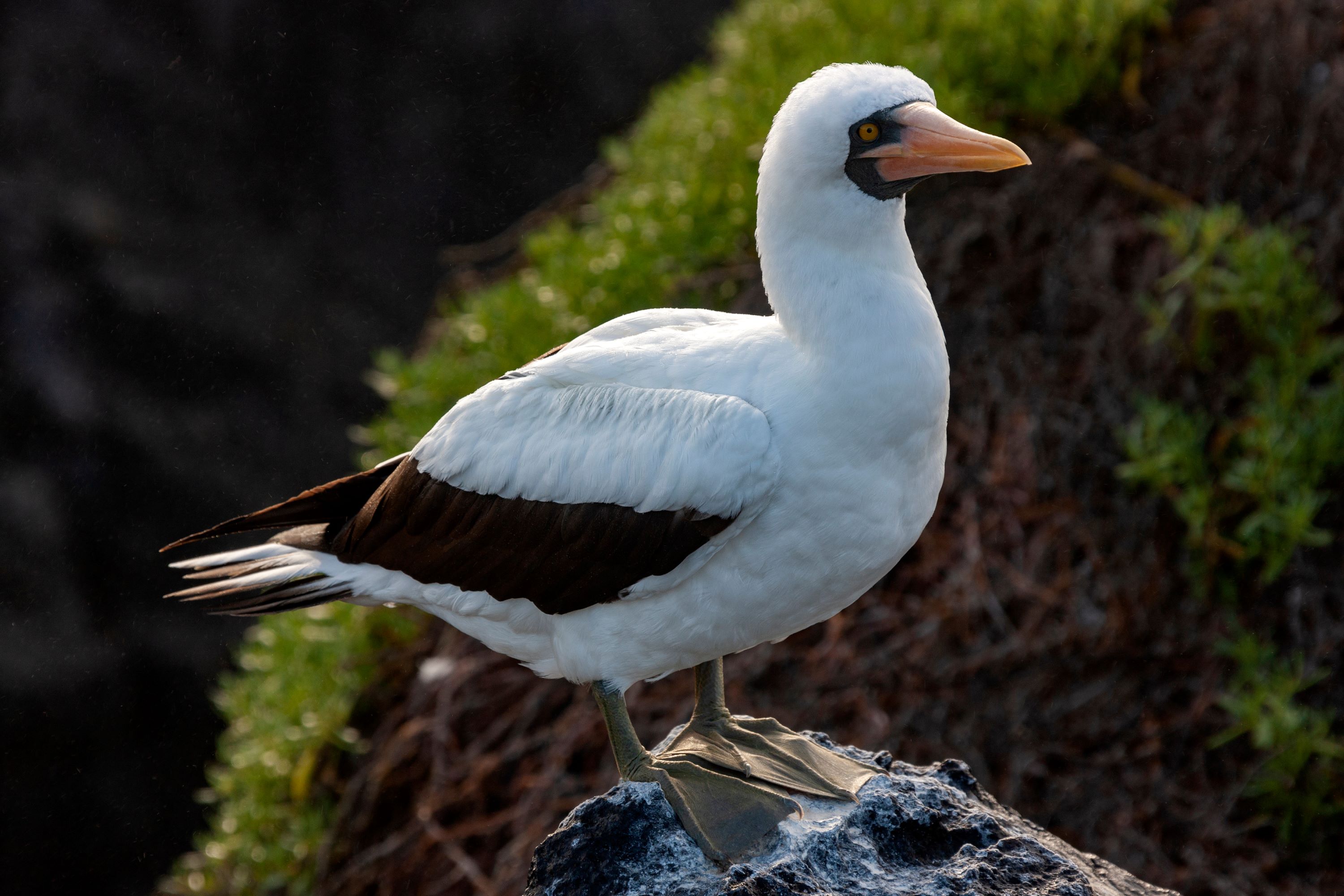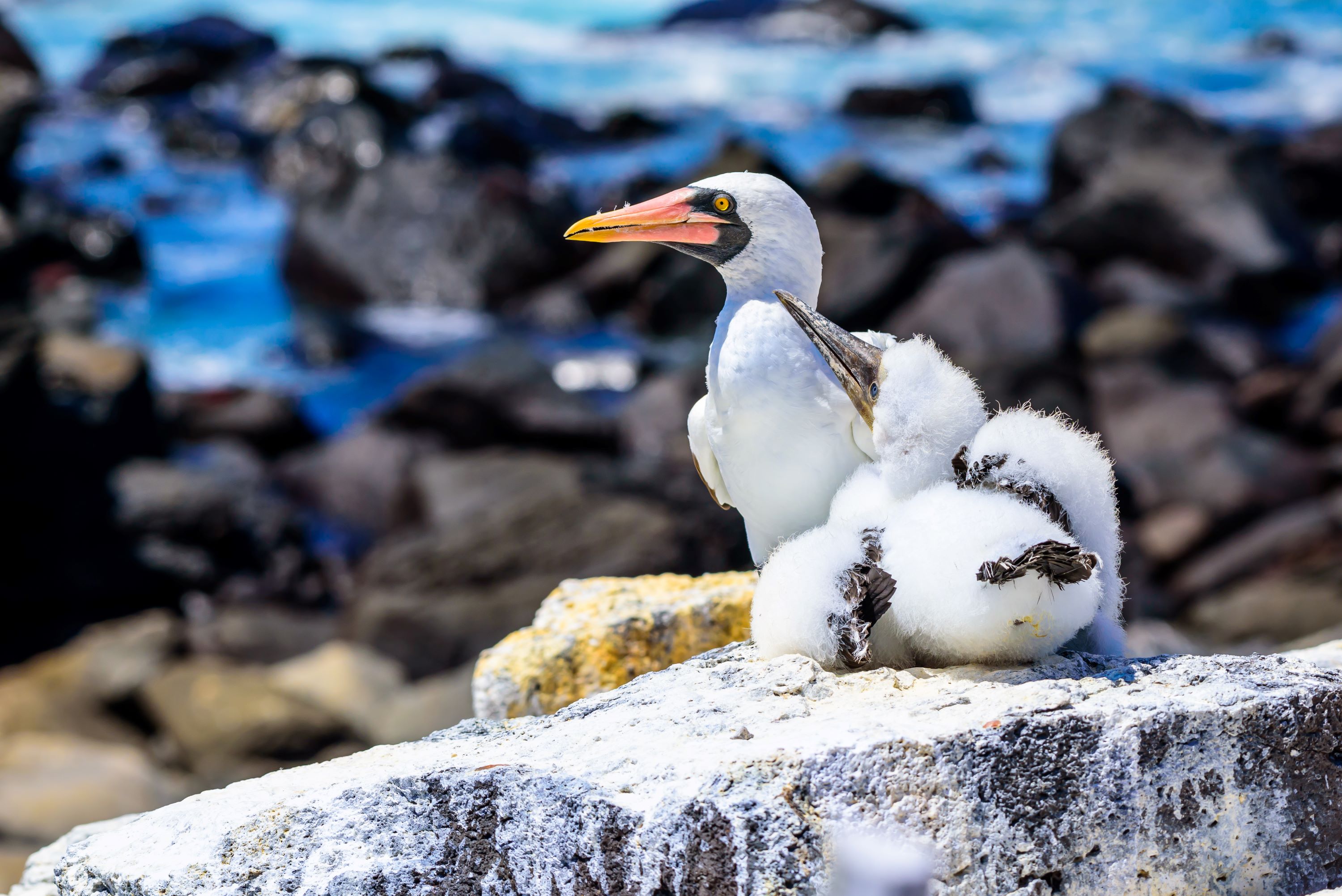
The Nazca Booby: A Glimpse into the Life of Sula granti
Introduction to the Nazca Booby
The Nazca Booby, scientifically known as Sula granti, is a captivating seabird belonging to the Sulidae family. This species, distinguished by its striking appearance and intriguing behaviors, inhabits the tropical waters of the eastern Pacific. The Nazca Booby has been a subject of extensive study due to its unique breeding strategies and social dynamics, offering valuable insights into avian ecology.
Physical Characteristics
Nazca Boobies are large birds, with adults typically reaching lengths of about 80-85 cm and wingspans extending up to 150 cm. They exhibit a predominantly white plumage with contrasting black flight feathers. Their faces are characterized by a distinctive black mask around the eyes, and they possess long, strong, and pointed beaks, which are pale orange or yellow in color. A notable feature of these birds is their feet, which range in color from a dull orange to a vibrant pink.
Habitat and Distribution
Sula granti is primarily found on the Galápagos Islands, though their range also extends to other parts of the eastern Pacific Ocean, including small islands off the coasts of Colombia, Ecuador, and Costa Rica. Their habitat is largely restricted to arid, rocky islands where they nest and roost. These areas are typically devoid of significant vegetation, which suits the ground-nesting habits of the species.

Feeding Habits and Diet
The Nazca Booby’s diet mainly consists of fish, particularly flying fish and sardines. They are exceptional hunters, employing plunge-diving techniques to capture their prey. These birds can dive from heights of over 30 meters, striking the water at high speeds to catch fish with remarkable precision. Their feeding habits are closely tied to the richness of the marine environment in their habitats.
Breeding Behavior and Nesting
Nazca Boobies are known for their complex breeding behaviors. They breed in large colonies, with nests scattered across the ground on their chosen islands. Unlike many other bird species, they do not construct traditional nests; instead, they lay their eggs on bare ground. The breeding season is closely linked to food availability and can vary annually.
Courtship and Mating Displays
Courtship in Nazca Boobies involves a series of elaborate displays, including vocalizations, bill-fencing, and mutual preening. These displays are crucial in mate selection and pair bonding. The bright colors of their beak and feet play a significant role in attracting mates.

Incubation and Chick Rearing
A distinctive aspect of Nazca Booby reproduction is their practice of obligate siblicide. Typically, two eggs are laid, but the first-hatched chick usually ends up killing its sibling, a behavior believed to be an evolutionary adaptation to ensure the survival of the fittest offspring. Both parents share incubation duties and take turns feeding the surviving chick through regurgitation.
Conservation Status
The Nazca Booby is currently classified as a species of least concern by the IUCN. However, they face threats from habitat disturbances, especially human interference and introduced predators on nesting islands. Climate change and associated shifts in fish populations also pose risks to their food supply and breeding success.
Conclusion: Understanding the Nazca Booby
In conclusion, the Nazca Booby (Sula granti) is a remarkable species that offers profound insights into the adaptive behaviors and ecological roles of seabirds. While not native to inland areas like Utah, their existence and behaviors are crucial in the broader understanding of marine ecosystems and avian biodiversity. The Nazca Booby stands as a symbol of the intricate and diverse life forms that inhabit our planet's oceans, reminding us of the importance of conservation and ecological balance.